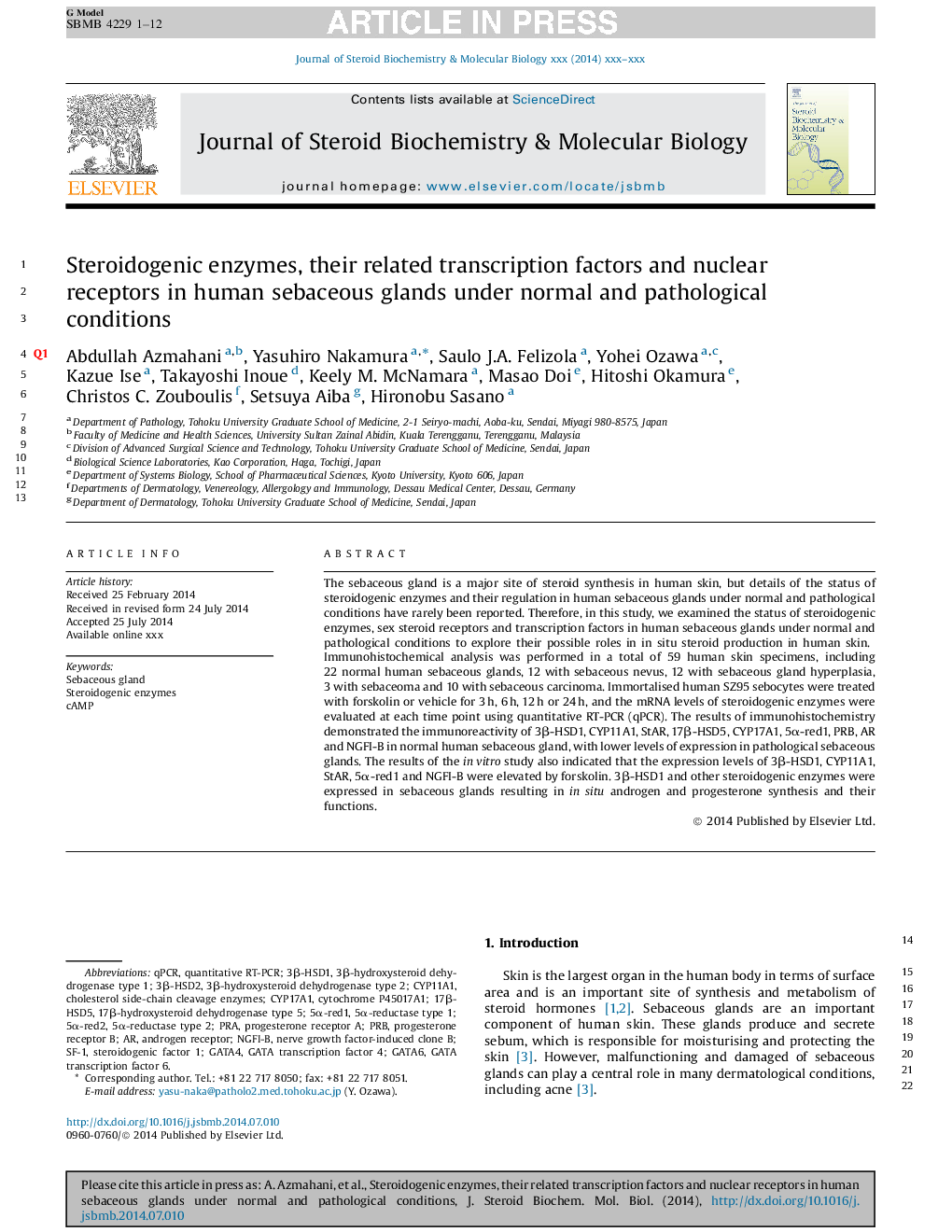| Article ID | Journal | Published Year | Pages | File Type |
|---|---|---|---|---|
| 8338354 | The Journal of Steroid Biochemistry and Molecular Biology | 2014 | 12 Pages |
Abstract
The sebaceous gland is a major site of steroid synthesis in human skin, but details of the status of steroidogenic enzymes and their regulation in human sebaceous glands under normal and pathological conditions have rarely been reported. Therefore, in this study, we examined the status of steroidogenic enzymes, sex steroid receptors and transcription factors in human sebaceous glands under normal and pathological conditions to explore their possible roles in in situ steroid production in human skin. Immunohistochemical analysis was performed in a total of 59 human skin specimens, including 22 normal human sebaceous glands, 12 with sebaceous nevus, 12 with sebaceous gland hyperplasia, 3 with sebaceoma and 10 with sebaceous carcinoma. Immortalised human SZ95 sebocytes were treated with forskolin or vehicle for 3 h, 6 h, 12 h or 24 h, and the mRNA levels of steroidogenic enzymes were evaluated at each time point using quantitative RT-PCR (qPCR). The results of immunohistochemistry demonstrated the immunoreactivity of 3β-HSD1, CYP11A1, StAR, 17β-HSD5, CYP17A1, 5α-red1, PRB, AR and NGFI-B in normal human sebaceous gland, with lower levels of expression in pathological sebaceous glands. The results of the in vitro study also indicated that the expression levels of 3β-HSD1, CYP11A1, StAR, 5α-red1 and NGFI-B were elevated by forskolin. 3β-HSD1 and other steroidogenic enzymes were expressed in sebaceous glands resulting in in situ androgen and progesterone synthesis and their functions.
Keywords
Related Topics
Life Sciences
Biochemistry, Genetics and Molecular Biology
Biochemistry
Authors
Abdullah Azmahani, Yasuhiro Nakamura, Saulo J.A. Felizola, Yohei Ozawa, Kazue Ise, Takayoshi Inoue, Keely M. McNamara, Masao Doi, Hitoshi Okamura, Christos C. Zouboulis, Setsuya Aiba, Hironobu Sasano,
